
How to Use SG90 Servo Motr: Examples, Pinouts, and Specs
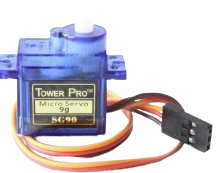
 Design with SG90 Servo Motr in Cirkit Designer
Design with SG90 Servo Motr in Cirkit DesignerIntroduction
The SG90 Servo Motor by AC (Manufacturer Part ID: Servo Motor) is a small, lightweight, and cost-effective servo motor widely used in robotics, RC vehicles, and hobby electronics projects. It is capable of precise angular movement and control, making it ideal for applications requiring accurate positioning, such as robotic arms, pan-tilt camera mounts, and model airplanes.
This servo motor operates on pulse-width modulation (PWM) signals and is compatible with most microcontrollers, including Arduino boards. Its compact size and ease of use make it a popular choice for both beginners and experienced electronics enthusiasts.
Explore Projects Built with SG90 Servo Motr
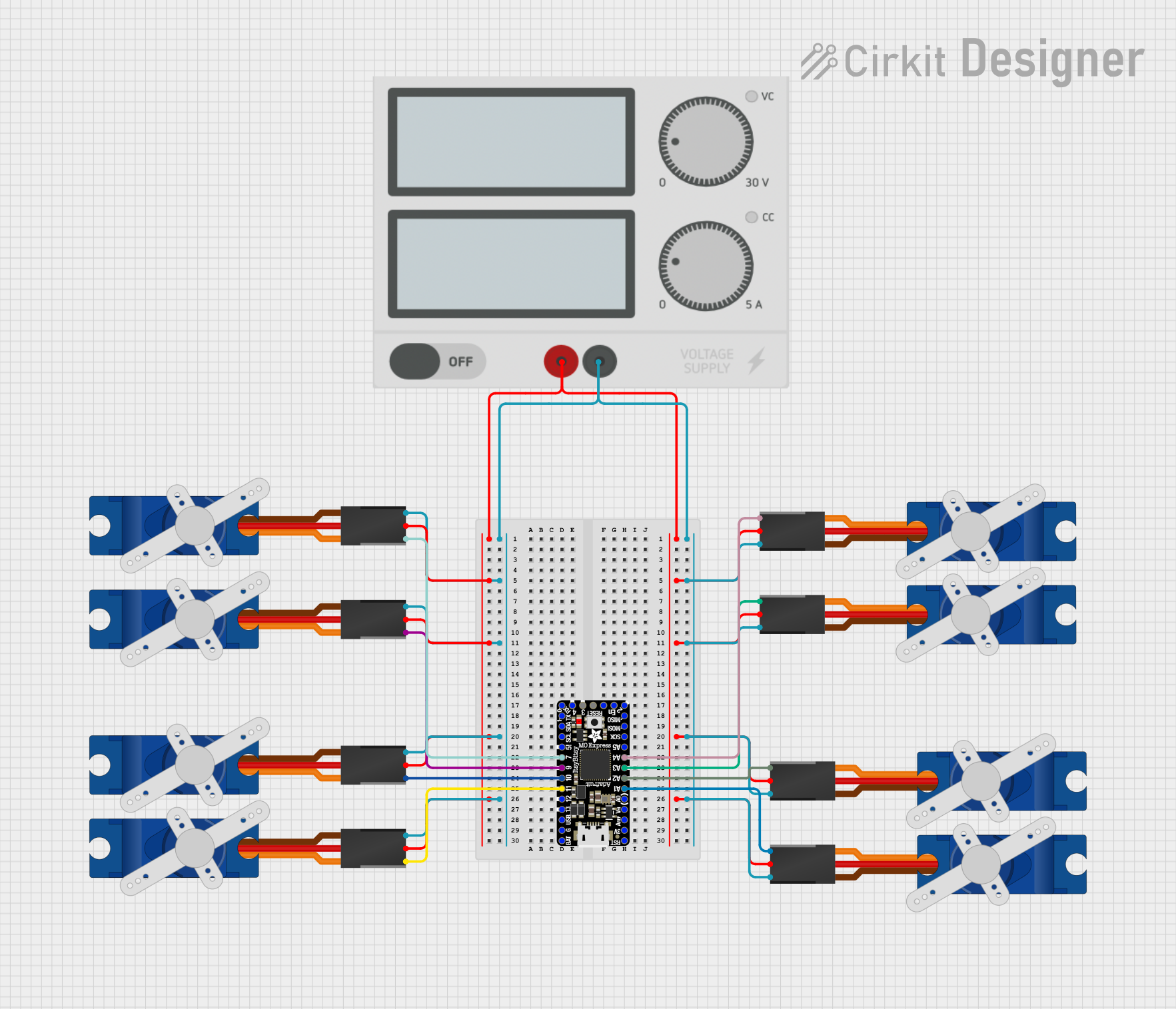
 Open Project in Cirkit Designer
Open Project in Cirkit Designer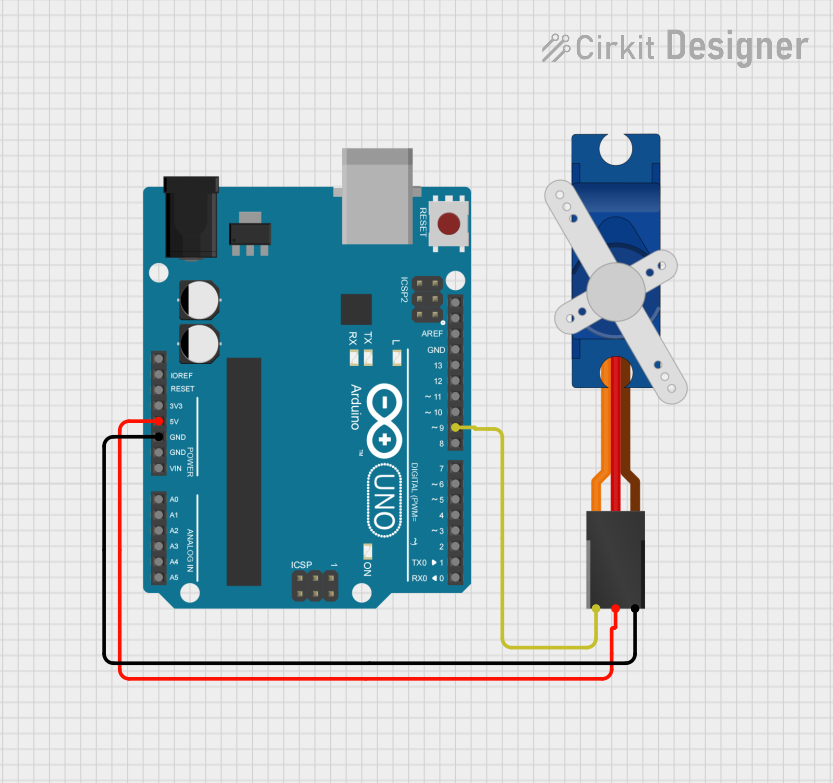
 Open Project in Cirkit Designer
Open Project in Cirkit Designer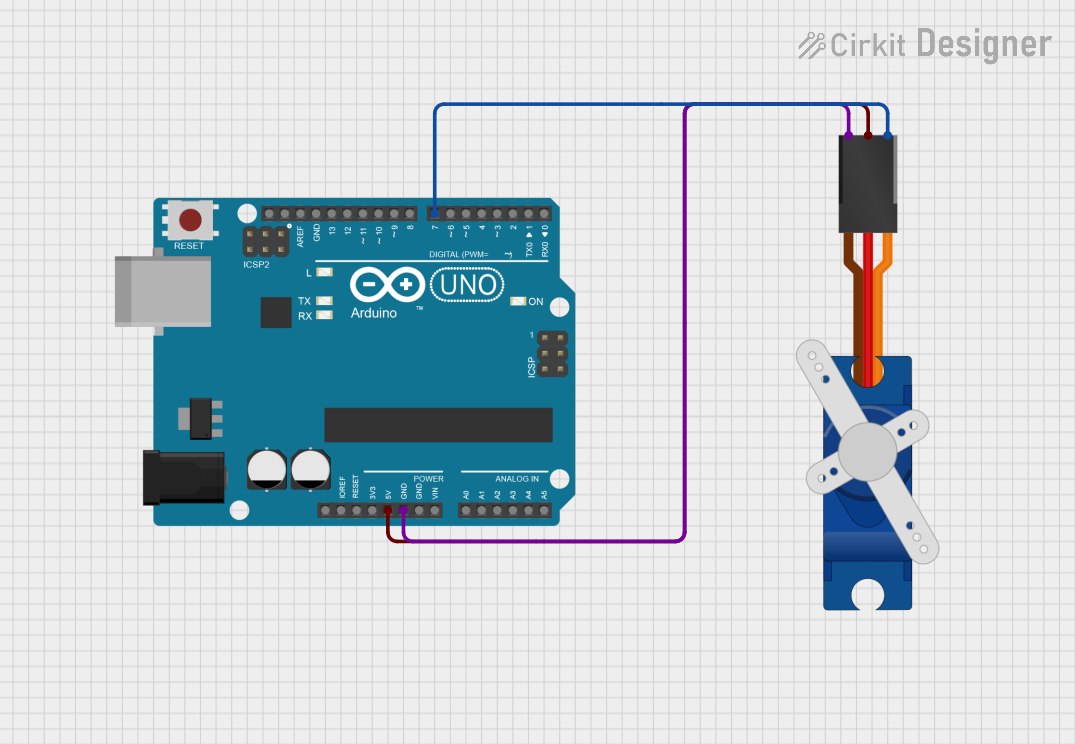
 Open Project in Cirkit Designer
Open Project in Cirkit Designer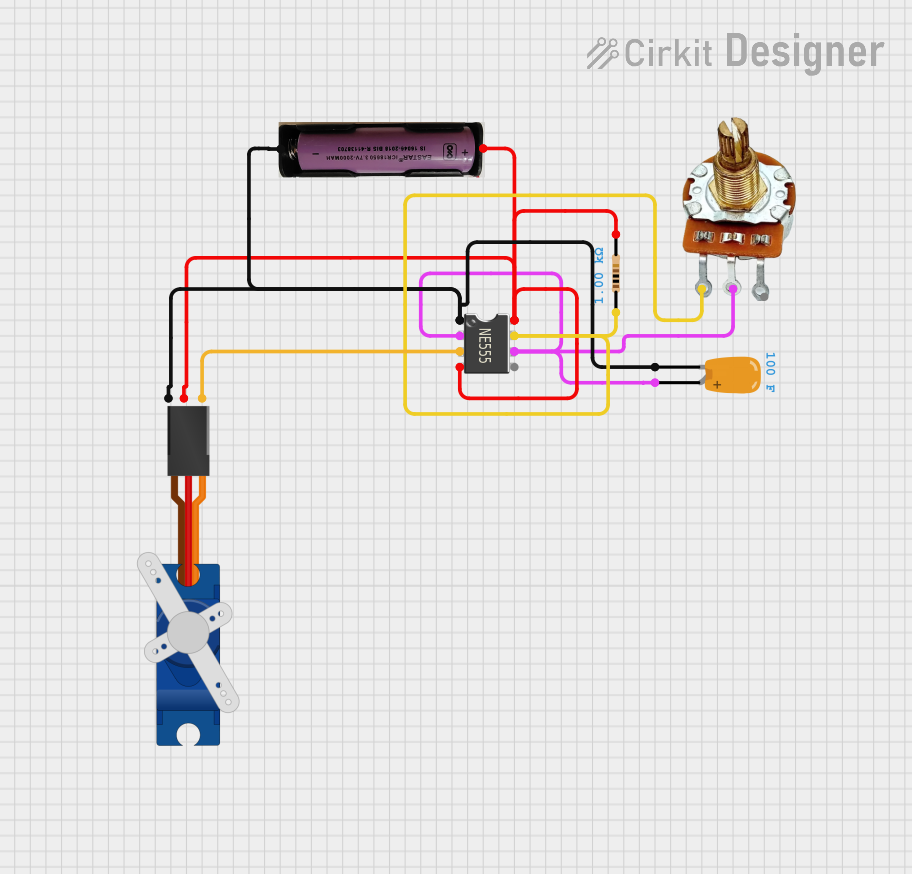
 Open Project in Cirkit Designer
Open Project in Cirkit DesignerExplore Projects Built with SG90 Servo Motr

 Open Project in Cirkit Designer
Open Project in Cirkit Designer
 Open Project in Cirkit Designer
Open Project in Cirkit Designer
 Open Project in Cirkit Designer
Open Project in Cirkit Designer
 Open Project in Cirkit Designer
Open Project in Cirkit DesignerTechnical Specifications
Below are the key technical details of the SG90 Servo Motor:
| Parameter | Value |
|---|---|
| Operating Voltage | 4.8V to 6.0V |
| Stall Torque | 1.8 kg·cm (at 4.8V) |
| Operating Speed | 0.1 s/60° (at 4.8V) |
| Control Signal | PWM (Pulse Width Modulation) |
| PWM Pulse Range | 500 µs to 2400 µs |
| Rotation Angle | 0° to 180° |
| Weight | 9 g |
| Dimensions | 22.2 mm x 11.8 mm x 31 mm |
Pin Configuration
The SG90 Servo Motor has a 3-pin connector with the following pinout:
| Pin | Wire Color | Description |
|---|---|---|
| 1 | Brown | Ground (GND) |
| 2 | Red | Power Supply (VCC) |
| 3 | Orange | Signal (PWM Input) |
Usage Instructions
Connecting the SG90 Servo Motor
- Power Supply: Connect the red wire to a 5V power source and the brown wire to ground (GND). Ensure the power supply can provide sufficient current (at least 500 mA) to avoid voltage drops.
- Signal Input: Connect the orange wire to a PWM-capable pin on your microcontroller (e.g., Arduino UNO pin 9 or 10).
- PWM Signal: Use a PWM signal with a pulse width between 500 µs (0°) and 2400 µs (180°) to control the servo's position.
Example: Using the SG90 Servo Motor with Arduino UNO
Below is an example Arduino sketch to control the SG90 Servo Motor:
#include <Servo.h> // Include the Servo library
Servo myServo; // Create a Servo object to control the SG90
void setup() {
myServo.attach(9); // Attach the servo to pin 9 on the Arduino
}
void loop() {
myServo.write(0); // Move the servo to 0 degrees
delay(1000); // Wait for 1 second
myServo.write(90); // Move the servo to 90 degrees
delay(1000); // Wait for 1 second
myServo.write(180); // Move the servo to 180 degrees
delay(1000); // Wait for 1 second
}
Best Practices
- Avoid stalling the servo for extended periods, as this can cause overheating and damage.
- Use a separate power supply for the servo if your circuit includes multiple components to prevent voltage drops.
- Ensure the PWM signal is stable and within the specified range to avoid erratic behavior.
Troubleshooting and FAQs
Common Issues and Solutions
Servo Not Moving:
- Cause: Incorrect wiring or insufficient power supply.
- Solution: Double-check the connections and ensure the power supply provides at least 500 mA.
Erratic Movement:
- Cause: Unstable PWM signal or electrical noise.
- Solution: Use a decoupling capacitor (e.g., 100 µF) across the power supply and ensure the PWM signal is generated correctly.
Overheating:
- Cause: Prolonged stalling or excessive load.
- Solution: Reduce the load on the servo and avoid holding it in a stalled position.
Limited Range of Motion:
- Cause: PWM signal out of range.
- Solution: Ensure the PWM pulse width is between 500 µs and 2400 µs.
FAQs
Q: Can the SG90 Servo Motor rotate continuously?
A: No, the SG90 is a positional servo motor with a rotation range of 0° to 180°. For continuous rotation, consider using a continuous rotation servo.
Q: Can I power the SG90 directly from an Arduino?
A: While it is possible, it is not recommended for prolonged use, as the Arduino's 5V pin may not provide sufficient current. Use an external power supply for better performance.
Q: How do I control multiple SG90 servos with an Arduino?
A: You can use multiple PWM-capable pins on the Arduino or a dedicated servo driver board to control multiple servos simultaneously.
By following this documentation, you can effectively integrate the SG90 Servo Motor into your projects and troubleshoot common issues with ease.